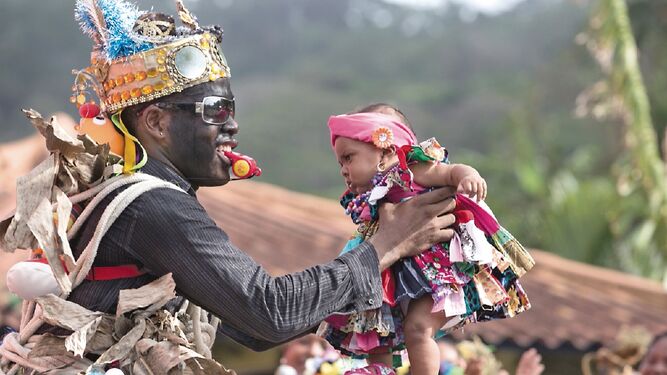Weekend Festival will showcase convergence of diverse mix of cultures
- By : Panama Now
- Category : Local Culture

The Festival of Congos and Devils of Portobelo 2019 will have a special halo.
It will be its first celebration after the recognition of the ritual and festive expressions of the conga culture as Cultural Patrimony of Humanity in November 2018, as determined by the United Nations Educational, Scientific and Cultural Organization (Unesco) .
Its program of activities will take place this April 27, from 12:00 noon to night in Portobelo, province of Colon (See box).
It includes artisanal and gastronomic fairs and the dances and music of the congos and devils.

Activity program
12:00 noon Craft and gastronomic fair in the Royal Customs of Portobelo and in the town park. 2:00 pm Presentation of Aphrodisiac on the stage in front of the park, 2:30 pm Meeting of congos and devils on the stage in front of the park. 7:00 pm Closing with fireworks. 7:15 pm Congo open in the park with all the participating groups.
Groups
Seven groups of Columbus congos will participate: Portobelo children, María Chiquita, Rescue of my village of Cativá, Palenque and Negros de Colón city, among others, and 14 devils: The Family of Portobelo, The Mischievous of Puerto Lindo, Alma de un town of Santa Rita, Kaleidoscopio Crew de Arco Iris, Elegua de Colón city, Caribbean Roots of Isla Colón and Great Alliance of Devils of Bocas del Toro, Ganga Pipe of Santa Rita, Crazy Family of Villa Alondra, Talent Crew of Puerto Escondido, High Class of San Judas, Los Meña de María Chiquita and Devils of the City and The Innoval.
In total, some 500 artists from all groups will be presented to the public, to show their skills and creations in masks, costumes, dances and songs.
The Festival of Congos and Devils , of biennial periodicity, was born in 1998, and then it was not expected to reach the transcendence and trajectory (11 editions) that today it holds, highlights the photographer Sandra Eleta, member of the Portobelo Foundation, organizers in conjunction with Historical Cultural Group of Portobelo, in partnership with the Tourism Authority and the National Institute of Culture.
The initiative has fulfilled its objective, assures Sandra Eleta: that the conga culture be recognized with a sense of belonging, as an integral part of the history of Panama, more after Unesco included it in its List of Intangible Heritage of Humanity .
The Festival of Congos and Devils of Portobelo also works as a source of income generation for the groups, and offers a space for meeting and enjoying cultural events to the public, which usually fill every corner of Portobelo when the date of the celebration arrives.
The activity has the website www.congosydiablosportobelo.com and has accounts on various social networks: Facebook (Fundación Portobelo and Festival de Diablos y Congos) and on Twitter and Instagram (@congosydiablos).



No Comments